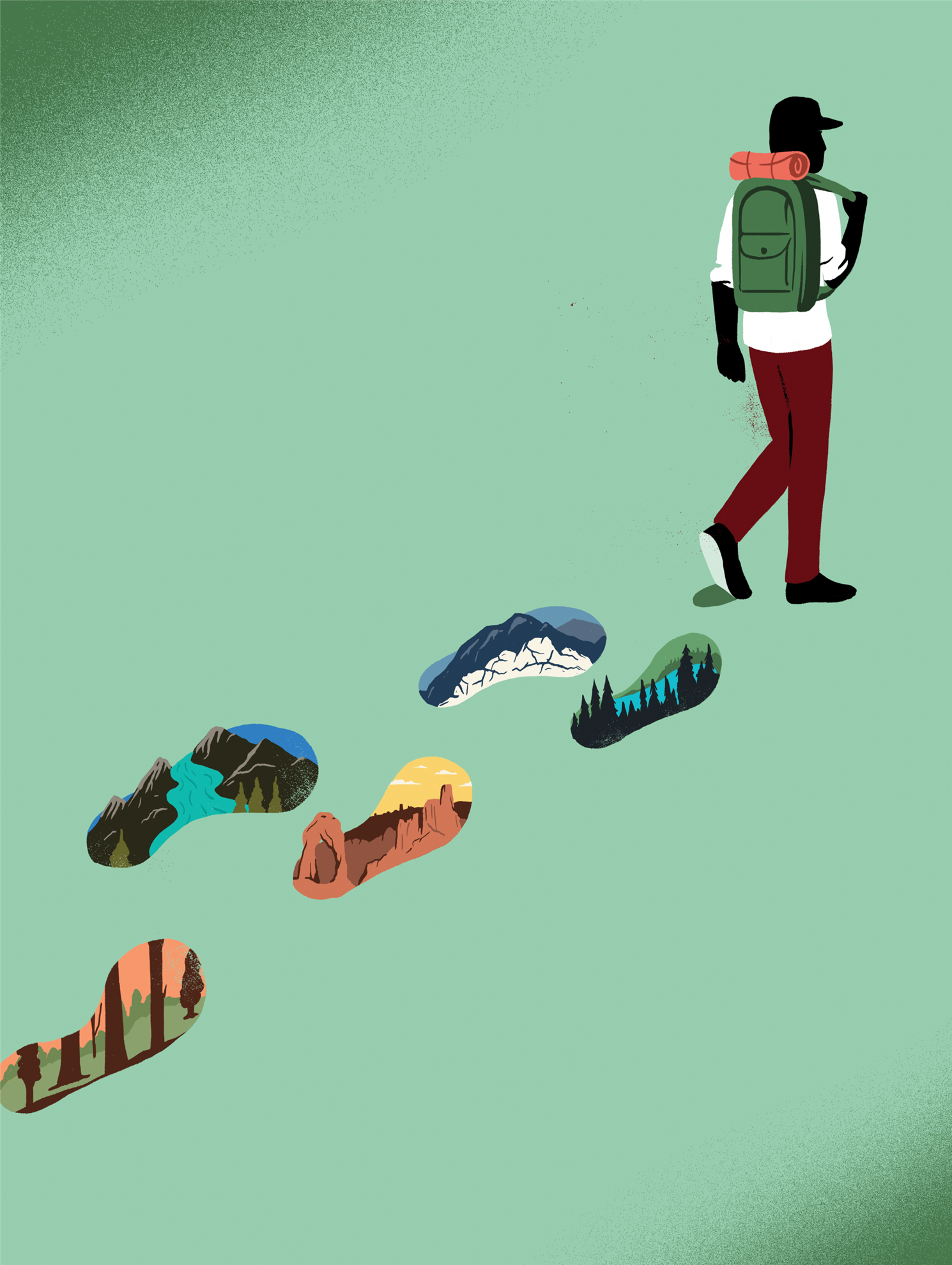
Mikah Meyer
Ambassadorial Scholar
It seemed all but certain that I had blown it. After logging tens of thousands of miles in a cramped van with a solar-powered fridge that chilled things only on occasion, I wouldn’t achieve my goal. The pilot of the seaplane flying me into one of the most remote national parks in the United States, the Aniakchak National Monument & Preserve in Alaska, had just told me that, because of restricted visibility, he would have to scratch our planned landing on the crater lake below. Then he added, “Like we agreed, you’ll have to pay me full price whether we can touch down or not.”
Two years before, at age 30, I had set off on an odyssey to visit all of our 419 national park sites on one continuous journey that would ultimately take three years and cover more than 75,000 miles. No one had done it before. From the U.S. Virgin Islands to the Badlands of South Dakota to Florida’s Dry Tortugas and beyond, I had traveled by sea, land, and air to visit every single park. I had survived on canned foods, endured blizzards and scorching heat, repaired flat tires and oil leaks, and been chased by security guards out of dozens of parking lots where I had hunkered down in my van for the night to save money. And now it looked like my name would go into the record books with an asterisk noting that, due to inclement weather, I had been shut out from visiting the Aniakchak crater — even though I had paid full price.
“All right, one last look,” the pilot said, dropping into the thick soup to see if there was the slimmest chance this dense cumulus formation did not extend all the way down to the surface of the Aleutian mountain lake. I saw nothing but an all-encompassing blanket of gray; that vista perfectly mirrored my despondency. But just as the pilot throttled up to turn toward home, a sliver of sunlight appeared far beneath us; glowing like a beacon, it illuminated a bright expanse of water under the cloud cover. Both of us let out a loud cheer. Five minutes later, the seaplane made a smooth landing on Surprise Lake in a crater bowl formed 3,500 years ago. I felt as if I had been blessed by divine intervention.
That sense of spiritual connection had been guiding me for a long time. I’m the son of a Lutheran pastor, so maybe it was to be expected. For sure it played a role in my current quest. My dad, who died at 58, loved road trips, and I undertook mine in large measure to honor his memory. In spirit he rode beside me on every leg of the journey. And his early passing confirmed to me that you can’t hold off on your dreams.
If my father provided all the inspiration I needed, I still had to find the funds. As a student at the University of Memphis in Tennessee, I had received an Ambassadorial Scholarship, sponsored by the Rotary Club of Memphis Central, that enabled me to enroll in McGill University in Montreal to study voice training as a countertenor. I didn’t know at the time that the scholarship would, indirectly, provide the means for me to undertake my national parks venture.
I more or less sang for my supper. In addition to money I had saved over a decade, I paid my way by giving recitals in churches and talking from the pulpit about my travel experiences. I shared my adventures and put out a hat.
I talked about the time I was in Washington’s Olympic Peninsula and drove through an entanglement of tall bushes that blocked my view, then felt a sudden drop. When I looked out the side window, I discovered that the front wheels of my van were hanging off a cliff. I threw open the driver’s side door and my whole life flashed by. Fortunately, some people showed up and pulled me and the van to safety.
And I related how at Dinosaur National Monument in northwestern Colorado — my favorite park — a wild goose, soon to be named George, joined our rafting group. He slept with us, partied with us, and flapped his way up a steep canyon hike with us. When we finally drove away, George honked and chased after the van.
My visits to churches also provided me with a chance to speak candidly as a gay Christian. I was raised in conservative Nebraska, where I struggled as a teenager to own my sexual orientation. It was super hard to come out. You had to choose whether to be gay and not be a Christian, or be a Christian and stay in the closet. Now, two decades later, I had an opportunity to tell my story and to be received with genuine affection.
From an early age, I had a strong desire to see the world. Rotary made that possible by seeding my journey. I’m asked often if I would do it all again. In a heartbeat, I answer. I was given a chance to follow my vision, embrace my true nature, and share both with a welcoming audience.
As told to Stephen Yafa
The LGBT Rotarians and Friends Rotary Fellowship is dedicated to creating an inclusive and welcoming community for LGBT+ people. Learn more >
Read more extraordinary tales from
ordinary Rotarians
• Illustration by Sébastien Thibault
• This story originally appeared in the January 2020 issue of The Rotarianmagazine.